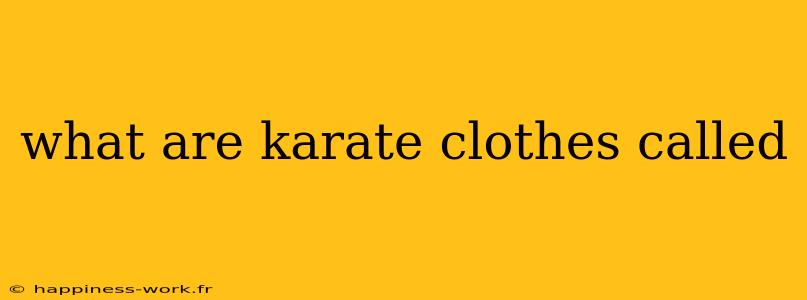Karate, a martial art rooted in Japanese tradition, employs a distinctive style not only in its techniques but also in its attire. When stepping onto the dojo mat, practitioners don a special uniform known as the gi. This article delves deeper into what karate clothes are called, their significance, and how to choose the right attire for your training.
What is a Karate Gi?
The term gi (pronounced "gee") refers to the traditional uniform worn by martial artists, including karate practitioners. The gi is typically made from cotton or a cotton-blend fabric, designed to withstand the rigors of training and sparring while allowing for freedom of movement.
Components of the Gi
-
Top (Kimono): The upper part of the gi is often referred to as the uwagi or kimono. It is usually a loose-fitting top with long sleeves, designed for comfort and flexibility.
-
Bottom (Pants): The lower part, known as zubon, is also loose-fitting to facilitate easy movement and kicking.
-
Belt (Obi): The belt signifies the practitioner's rank and level of expertise in karate. It is tied around the waist and comes in various colors, each representing a different rank within the martial arts discipline.
Why is the Gi Important?
The gi serves several important purposes in karate:
- Uniformity: Wearing a gi promotes a sense of equality and community among practitioners, regardless of their individual skill levels.
- Tradition: The gi is steeped in history and tradition, connecting modern practitioners to their martial arts heritage.
- Functionality: The design of the gi allows for a full range of motion, which is essential for executing techniques effectively.
Analysis of Karate Attire Choices
When selecting a karate gi, there are several factors to consider:
-
Material: Look for high-quality cotton or a cotton blend that can endure physical wear and tear. Some practitioners prefer heavier fabrics for durability, while others opt for lighter materials for breathability.
-
Fit: It’s vital to choose a gi that fits well. A gi that is too loose may hinder movement, while one that is too tight can restrict motion and lead to discomfort.
-
Color: Traditionally, karate gis are white, but other colors like blue and black can also be found, especially in competitive settings. Check with your dojo for any specific uniform requirements.
Practical Example: How to Choose the Right Gi
Suppose you are a beginner and want to start karate. Here’s how you can choose the right gi:
-
Visit a Specialty Store: Look for a martial arts store that specializes in karate attire. This allows you to try on different sizes and styles.
-
Consult Instructors: Talk to your karate instructor or more experienced students about recommended brands and styles. They can provide valuable insights based on their own experiences.
-
Consider Your Budget: Karate gis can range in price. As a beginner, you may want to purchase a more affordable option, while advanced practitioners might invest in higher-quality garments.
SEO Optimization
To ensure this article reaches a broader audience, important keywords such as "karate gi", "karate attire", "martial arts uniform", and "karate clothing" have been strategically placed throughout the content.
Conclusion
In conclusion, karate clothes are called gi, a term that embodies not just the physical outfit but also the spirit of the martial art itself. Understanding the components, significance, and how to choose the right gi is essential for anyone interested in practicing karate. Whether you're just beginning your journey in martial arts or are an experienced practitioner, wearing the right attire can enhance your training experience and connect you to the rich traditions of karate.
For more detailed guides and how-tos related to martial arts, be sure to check resources like WikiHow for user-generated content and insights.
This article incorporates insights and content from WikiHow on the topic of karate attire and is intended to provide additional context and practical examples for readers.
